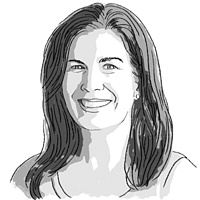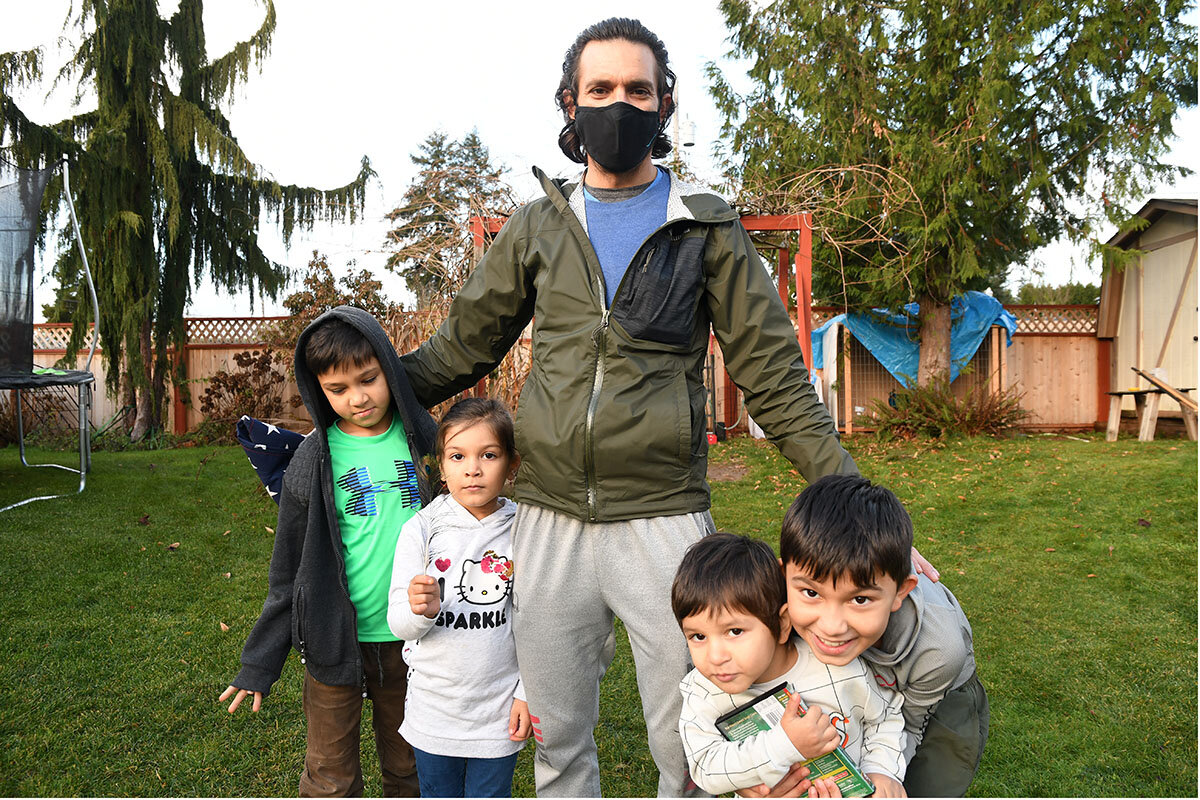‘Lost year’ for education: Global lessons on how students can rebound
Loading...
As an Afghan boy growing up in a refugee camp in northwestern Pakistan, Ismail Khan remembers his first lesson in the power of education – and its disruption. In 1996, when he was in 6th grade, protests by Islamic militants shut down schools and government offices in the area for about four months, forcing him and his siblings to stay home.
“Those kids whose parents were educated kept studying at home, and were kind of ok,” he recalls. “All those kids who did not study for four months were struggling, and kept struggling for a year or two to get back to the same level.”
From his formative days in the refugee camp, to his years running a school in the war zone of his native Afghanistan, to now parenting his own school-aged children in Kent, Washington, during the coronavirus pandemic, Mr. Khan’s belief in the transformational role of education has stayed with him – as has his confidence that students can eventually regain lost ground, given the right help.
Why We Wrote This
Societies that rebuilt their education systems after war and natural disasters may offer lessons on how to close the learning gap opened by the pandemic.
As the pandemic shuts down schools across the globe, warnings abound that acute learning losses, the limits of remote schooling, and the cancelation of extracurriculars – coupled with widespread economic hardship – will create a “lost generation” of youth, particularly in developing countries where child labor persists.
Yet Mr. Khan’s experience is a reminder that disruptions to education come in many forms, from wars and natural disasters to epidemics. And while these crises have undeniably had negative impacts on education – often hitting disadvantaged populations hardest – research also shows that these impacts need not be permanent. Instead, they illustrate how adequate public resources, well directed, can make setbacks temporary. Planning, as with any contingency, can make a huge difference, say education researchers.
“A catastrophe, a pandemic is likely to have a negative impact on outcomes,” says Emma García, an education expert at the left-leaning Economic Policy Institute in Washington. Nonetheless, she says these negative effects can be corrected after a few years if teaching resources are redirected to students who most need them.
Coping mechanisms
Indeed, from Afghanistan to Sierra Leone to the United States, there are some reasons for optimism – not only that students can recover academically, but that they can gain healthy coping mechanisms for future challenges.
“Your ability to cope with distress, your resilience, your sense of belonging to a community – there are many life skills that kids may have been able to develop,” says Dr. García. “If kids were able to develop resilience, that is going to be an asset for the rest of their lives and also when they go back to school.”
Student assessments need to move beyond test scores to capture such skills, so that educators can reinforce and leverage students’ social and emotional capabilities that may have improved during the pandemic. “Resilience, tolerance, understanding, sympathy, creativity – those are assets,” she says.
Systemic changes
Another overarching lesson is that educational crises – even those caused by violent regime change – can create opportunities for systemic reform that might not otherwise exist. “The post-conflict reconstruction environment offers significant opportunities for policy reform and system change,” says a 2005 World Bank report that draws on a database of 52 countries affected by war since 1990.
This has been true of the war in Afghanistan. Under the Taliban regime of Islamic fundamentalists from 1996 to 2001, education was severely restricted for females, girls’ schools were closed, and madrassas or mosque schools provided most education. In the years after the U.S.-led coalition overthrew the Taliban, school enrollment surged from about 1.2 million students to top 9 million, including more than 3.5 million girls, according to the Afghan Ministry of Higher Education.
After returning to Afghanistan in 2001, Mr. Khan in 2003 helped found and later manage a private, coeducational school for English and computer skills in the eastern city of Jalalabad that thrived amidst fighting and protests against U.S. forces. After closing earlier this year due to COVID-19, the school, which Mr. Khan’s brother runs, is now open.
Research suggests that amid the negative disruption of war to society and political institutions, communities that are hungry for change and renewal in education can overcome bureaucratic resistance. In Kosovo, for example, administrative breakdown during the 1998-99 war contributed to “fairly radical reforms in terms of community involvement in school governance,” according to the World Bank report.
Ebola and Sierra Leone
Lessons from countries hit by past epidemics are also revealing.
Sierra Leone – a country also torn apart by a 1990s civil war – was hit hard in 2014 by Ebola. Children were especially affected. About 20% of Ebola cases were in youths under 15, thousands of children were orphaned, and schools were closed for about 9 months.
Vickie Remoe, a native of Sierra Leone, TV host, and education advocate, took part in projects to help students recover lost ground.
“The big lesson for education from Sierra Leone to the world is that even in a place with a weak educational system like Sierra Leone, students are resilient,” says Ms. Remoe, who spent six months in Sierra Leone during the current pandemic.
One successful initiative during the Ebola school closures, for example, was an educational radio program that was able to reach up to 90% of at-home students. The initiative was reactivated in May when the pandemic forced schools to close again.
Accelerated education programs tailored to help struggling students catch up have also seen some success in Sierra Leone. One effort, piloted soon after the Ebola epidemic in 2016, helped 720 girls and boys aged 10 to 16 who were out of school to complete elementary school in just three years, and pass national primary school exams. The program enrolled many girls who had dropped out – or been barred from school by the government after becoming pregnant – during the Ebola crisis.
Educational rebounds after Katrina
Educational rebounds have also been tracked by researchers following natural disasters such as Hurricane Katrina, which hit New Orleans in 2005. Students affected by Katrina did catch up, although it took nearly two full years to make up for the lost instructional time, experts say.
A key discovery from Katrina, research shows, is the importance of both ongoing teacher training and matching the most effective teachers with the most vulnerable students during the catch-up period.
Indeed, teachers may themselves benefit from an enhanced program of online training during crises, which will in turn help boost their motivation, experts say.
Katrina also showed how correctly matching teachers and students depends on a broad and detailed assessment of where students have fallen behind, coupled with a targeted menu of interventions, rather than a cookie cutter approach, Dr. García says.
Helping struggling students could involve steps ranging from an expanded school schedule and summer programs, to smaller classes, teacher aids and tutors, and counseling, she says.
Hopeful signs for some students
Some initial U.S. testing results during the pandemic offer signs of optimism. “We found that for the most part, kids were still making gains in both reading and math” says Beth Tarasawa, who heads a research team at the Northwest Evaluation Association, an Oregon nonprofit focused on student assessments. The study looked at 4.4 million students in grades three to eight.
Still, Dr. Tarasawa cautioned that a higher percentage of children than usual – 25% – were missing from the latest testing sample, and those children were disproportionately students of color, poor-performing, and from high-poverty schools. “While there are signs for optimism, it’s still very early and we have much more to go through in weathering the storm,” she says.
Research in the U.S. is ongoing, with one national study by online learning company Amplify finding more students in grades K-5 needing intensive intervention for literacy skills, especially 1st graders.
Mr. Khan agrees with the concerns and worries that with a full-time job, he lacks adequate time to support his four children with online learning. “By the time they are in school I am at work, and when I come back at 7 o’clock they go to sleep,” he says, adding that his wife speaks only limited English.
Perhaps what is needed most, he says, is patience by all concerned. “They will get back on track,” he says, “but it will take time.”
Editor’s note: As a public service, we have removed our paywall for all pandemic-related stories.







